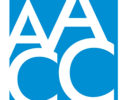Tackling the challenge of child care
By AACC 21st Century Center Staff
October 4, 2016
A new report by the Urban Institute looks at strategies employed to help low-income parents balance parenting with getting an education and workforce training.
For low-income parents, child care can be a barrier to getting ahead. Many postsecondary institutions, local agencies and other organizations are devising strategies to help these parents get the education and training they need to support their families.
A new Urban Institute report includes six steps for addressing the challenge:
Step 1: Assess needs and identify partners
Step 2: Structure and schedule workforce development activities to facilitate access to child care
Step 3: Assess child care needs as part of intake and planning and provide ongoing support
Step 4: Help parents understand and find child care options in their community
Step 5: Help parents access child care subsidies to offset the cost of care
Step 6: Facilitate access to a supply of affordable care
There are some community colleges tackling the challenge of child care.
In New York, the Erie Community College One Stop Center is designed to provide unemployed and underemployed residents with career preparation services. Many of the people benefiting from the services are Temporary Assistance for Needy Families (TANF) parents. The program helps facilitate access to child care. During the intake process, staff assess child care needs as part and provide ongoing support. Clients are screened to see what benefits they may be eligible for and referred to specific case managers with expertise in those issues and benefits.
Staff help parents access child care subsidies to offset the cost of care. Parents also may receive up to $12,000 in child care subsidies if they don’t qualify for Child Care and Development Fund (CCDF) subsidies and are in training that’s likely to lead to employment.
Linn-Benton Community College in Oregon is making use of existing publicly funded programs. The Head Start program gets free rent and utilities on campus, allowing the program to provide care for an extended day for the entire college year. As of spring 2014, 80 families were served. The local child care resource and referral (CCR&R) agency helps those on the waiting list find alternative care in the community and apply for CCDF subsidies.
The college received a federal Child Care Access Means Parents in School (CCAMPIS) grant, which allows for the institution to cover full-year child care costs for between 10 and 20 families who use care in the community.
Maryland’s Anne Arundel Community College launched certificate programs in mechatronics and cyber technology. The programs were taught in a cohort model, so students enrolled in the same courses together each semester. The predictability of the block schedule helped parents to schedule child care because it minimized breaks between classes and let them know exactly when they would be in class. Students in the cohorts were connected with “navigators” who helped connect parents with resources regarding child care options.
Another way the navigator helped? “If a parent was having difficulty attending class and completing work because their child was sick, the navigator would talk to their instructors about deadline extensions and coordinate with the tutor to help the parent catch up on missed lectures and assignments,” according to the report.
Continue the conversation on our LinkedIn group.



